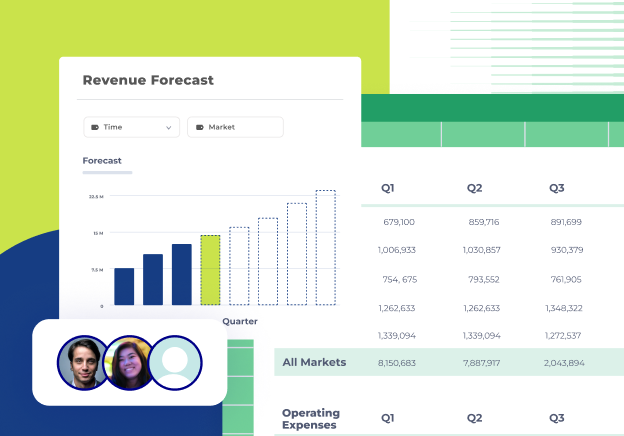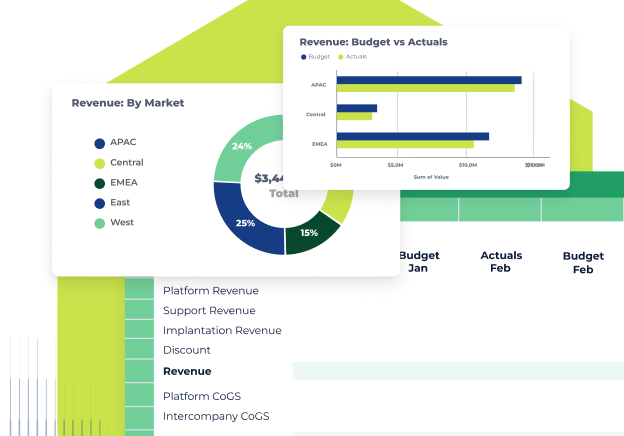1. Show, don't tell.
Instead of just presenting numbers, use data visualization tools to create interactive budget dashboards. Share these with department heads, encouraging them to engage directly with the data. The real-time nature of interactive dashboards allows department heads to instantly see the effects of potential budget adjustments. This means faster iterations and real-time discussions, reducing the error-prone back-and-forth that can slow down the budgeting process.
2. Encourage transparency.
Budgeting may bring out strong opinions about the path the company takes or the most likely activities to produce results. As part of transparency efforts, encourage a culture of communication among and through the org chart. Provide channels and points of contact for individual contributors to discuss proposed or upcoming change. Use data forms or surveys as a way to collect information, hear alternate perspectives, and identify unforeseen outcomes before a budget activity is put into practice.
3. Initiate a feedback loop.
Collaboration shouldn't end when the budget is approved. Set up regular feedback sessions with department heads post-approval. By collaboratively analyzing what worked and what didn't, you not only refine the process but also foster a sense of collective responsibility and learning for future budget cycles. | 





.png)









.png)
.png?upscale=true&upscale=true&width=560&name=Untitled%20design%20(5).png)
.png?upscale=true&upscale=true&width=560&name=Meta%20image%201200x675@1x%20(1).png)
%20(1).webp?upscale=true&upscale=true&width=245&name=Cash%20flow%20forecasting%20(2)%20(1).webp)
.png?upscale=true&upscale=true&width=245&name=Untitled%20design%20(7).png)
-1.png?upscale=true&upscale=true&width=245&name=Sales%20Quota%20Capacity%20(1)-1.png)
